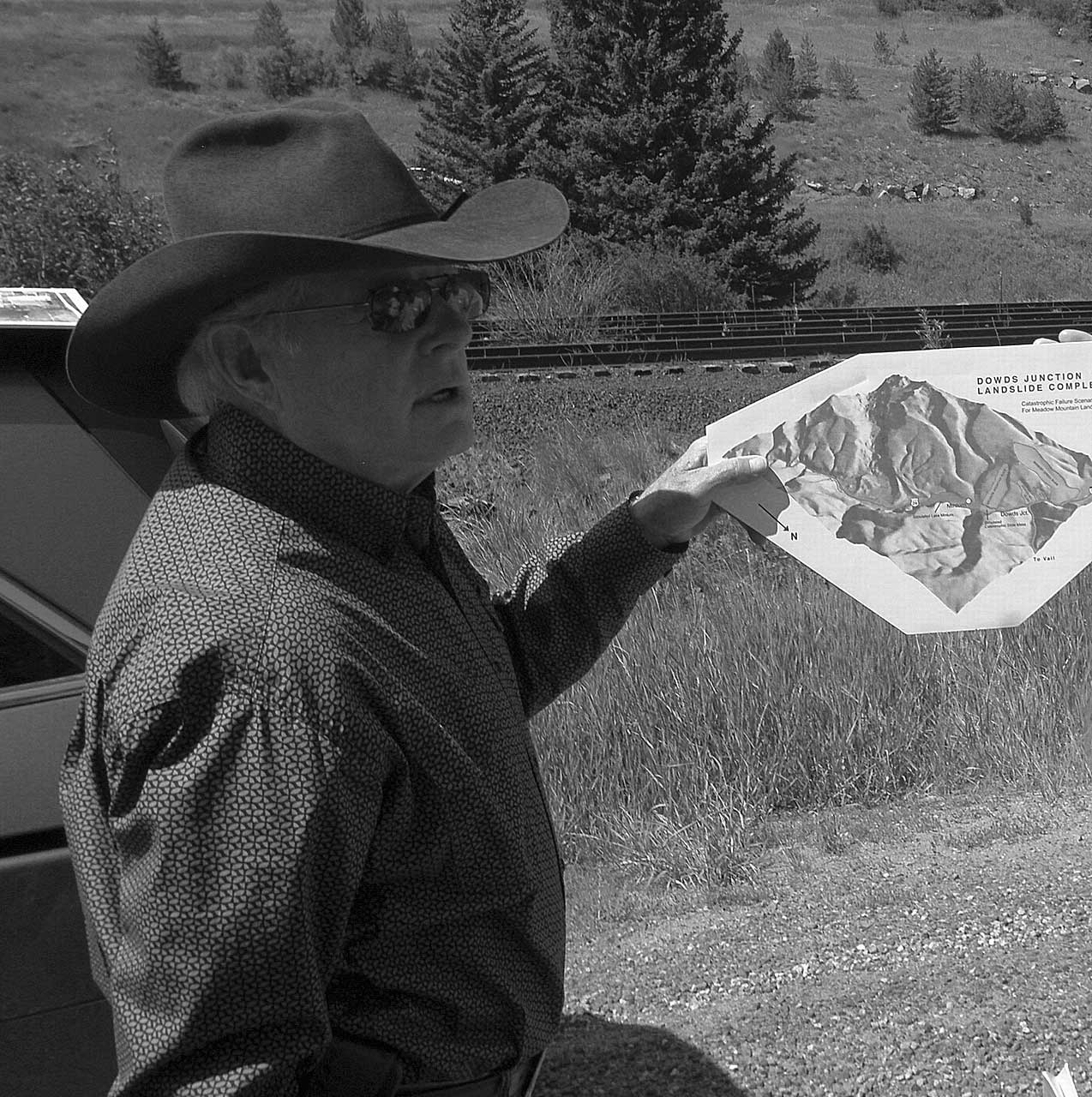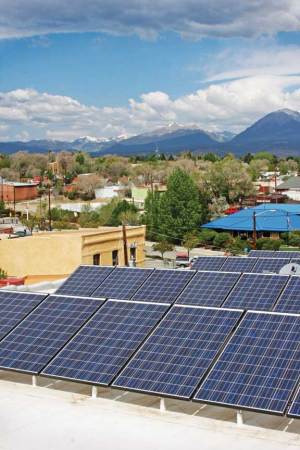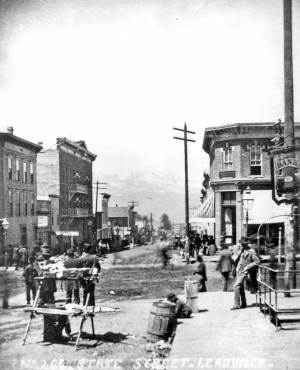Dr. Vince Matthews is principal of Leadville Geology LLC, and recently was interim executive director of the National Mining Hall of Fame and Museum. He retired as state geologist and director of the Colorado Geological Survey at the beginning of 2013.
Vince received Bachelors and Masters degrees in Geology from the University of Georgia and a Ph.D. from the University of California, Santa Cruz and holds Outstanding Alumnus Awards from both institutions. He held tenured positions at two universities and has taught geology at the University of California, University of Northern Colorado, Arizona State University, the Frank Lloyd Wright School of Architecture and the University of Texas of the Permian Basin.
As an executive in the natural resources industry for Amoco, Lear, Union Pacific and Penn Virginia, Matthews explored for oil and gas in virtually every basin in the U.S., including Alaska and the Gulf of Mexico. Part of his experience in the natural resources industry included responsibility for coal, lime and limestone activities in New Jersey, Virginia and Tennessee.
He is the author of the award-winning publication, Messages in Stone: Colorado’s Colorful Geology and the map, A Tourist Guide to Colorado Geology. Matthews is a senior fellow in the Geological Society of America and was the 2014 recipient of the Pioneer Award from the American Association of Petroleum Geologists.

Colorado Central: Where did you grow up?
Vince Matthews: First eight years in Maryville, Tennesee, then moved to Pittsburgh, Pennsyvania.
CC: What inspired you to become a geologist?
Vince: My first paid job was teaching gold panning at Philmont Scout Ranch in northern New Mexico. I thought geology would get me in the out-of-doors and teach me how to successfully be a prospector out West with a little burro tagging along behind. I fell in love with the science of geology after my first course and started a lifelong quest of trying to see and understand as much as I can about this fascinating subject.
CC: What prompted you to move to Colorado?
Vince: My love of the West that was instilled at Philmont, where I worked for five summers. When I received my Ph.D., I was offered jobs at Emory University and the University of Northern Colorado. I chose Greeley.
CC: When were you given the position of state geologist and director of the Colorado Geological Survey?
Vince: 2004
CC: For how long?
Vince: Nearly nine years, under three governors and four executive directors of the Department of Natural Resources.
CC: How were you chosen (what are the qualifications)?
Vince: When I was hired, it became a “Senior Executive Service” position that served year-to-year at the pleasure of the governor of Colorado. There are statutory requirements as follows: 34-1-102. State geologist – appointment – qualifications. The executive director of the department of natural resources shall appoint a state geologist, subject to the state constitution and the state personnel system laws. The state geologist shall be the director of the Colorado geological survey. The state geologist shall be a professional geologist, as defined in section 34-1-201 (3), and shall have professional, managerial, supervisory, practical and technical experience and knowledge in the use of geology, earth sciences and natural resource planning and management.
CC: Your thoughts on the process of hydraulic fracking?
Vince: Within one year of Col. Drake drilling the world’s first oil well in 1859, five additional wells that were drilled nearby were artificially fractured using black powder because they did not flow as much oil as Drake’s well. In 1866, nitroglycerin replaced black powder as the substance of choice for artificially fracturing rock in oil and gas wells. Nitroglycerin torpedoes became the standard fracturing technique of the petroleum industry until the early 1940s. After a massive explosion of a nitroglycerin truck in Pennsylvania, the industry looked for a safer way to fracture wells. In the late 1940s, the industry began using hydraulic fracturing as the technique to artificially stimulate natural gas and oil wells.
This fluid had two significant advantages: first, it was not likely to blow up, and second, sand could be transported into the formation in order to prop open the artificially created cracks. Beginning in the 1970s, most natural gas wells were hydraulically fractured because the areas containing rock that did not need fracturing were mostly drilled up. Without hydraulic fracturing, this country would have very little energy of its own today.
Hydraulic fracturing itself is not the actual cause of most of the consternation that flies under the banner of “Ban Fracking.” Smells, truck traffic, noise pollution, air pollution, light pollution, water pollution, waste water disposal, split mineral estates, etc., are all valid concerns of communities where the pace of oil and gas drilling has accelerated in the last decade and moved into neighborhoods. However, these irritants are not a result of hydraulic fracturing, they are a result of drilling for oil and natural gas. The hydraulic fracturing itself has not been shown to be a problem, and it is closely monitored by the Colorado Oil and Gas Conservation Commission, which has some of the strictest regulations in the nation. It seems far more useful to identify, separate and address each of these valid concerns, rather than muddying the waters by lumping them all under the “Ban Fracking” umbrella. There are a small number of activists who are opposed to all fossil fuel development and use “Ban Fracking” as their battle cry for that purpose.
CC: How do you respond to those who insist that Earth and life are only 6,000 years old, as told in the Bible?
Vince: The two end members of this question are: 1.) There is no God and Earth formed coincidentally 4.54 billion years ago, and 2.) God created the earth in six days, approximately 6,000 years ago. Because there is a broad spectrum of belief between these extremes, faith and science are not always in conflict. I know a Catholic priest who also happens to be a professor of geophysics and has no problem with the evidence for a 4.54-billion-year-old Earth interfering with his faith. Pope John Paul II also delivered a speech in which he stated that evolution is compatible with the teachings of the Catholic Church.
Geologists have different views on this issue. Some are atheists and believe that the earth is 4.54 billion years old. Some are agnostics and believe the same. Some are religious and/or spiritual, and believe the same. And, some geologists try to fit what they know about geology into an approximately 6,000-year, biblical framework. Fortunately, we are free in this country to pursue our individual beliefs. It seems that only when one of the two extremes tries to force their beliefs on others, that conflict arises. The 4.54-billion-year age appears to me to best fit the vast amount and variety of data that has accumulated over a couple of centuries of geologic investigation.
CC: Tell us a little about your book, Messages in Stone: Colorado’s Colorful Geology.
Vince: Messages in Stone was a labor of love. I happen to believe that Colorado has the most diverse, well-displayed and best geology in the nation. That is why so many universities across the country bring their students here, and even have permanent field stations in Colorado. I continually try to learn more about our geology and am constantly amazed at the depth and breadth of what we have.
My passion for geology and for sharing this rich geologic heritage prompted my commitment to putting this little book together. “Messages in Stone” was written as an introduction to geology, using only Colorado examples. Because geology is a very visual science, it contains more than 450 color images from all across the state. A conscious attempt was made to minimize the amount of jargon. It is gratifying that at least a dozen institutions of higher education in Colorado have used it as a text.
CC: Is there a particular place in this region you find particularly interesting geologically?
Vince: The Rio Grande Rift is particularly interesting because it is the cause of most of the high elevations in Colorado, as well as the San Luis Valley and our wonderful Upper Arkansas Valley. The rift runs from Mexico northward through New Mexico and Colorado at least to Kremmling. It is exciting because it is a place where the crust is measurably being pulled apart today!
CC: Are you a rock collector?
Vince: Somewhat.
CC: Do you have a prized possession?
Vince: A specimen containing native gold that was found by a friend in a waste dump in the Historic Leadville Mining District.
CC: Tell us about Colorado’s official state rock.
Vince: Yule Marble is a pure white marvel that comprises the Tomb of the Unknowns and the exterior of the Lincoln Memorial. It also was used in 30 buildings in Colorado and an additional 100 buildings across the country. It is claimed that Michelangelo would have used Yule Marble rather than Carrera, had it been available to him. Because of its chemical purity, uniform granularity and small grain size, it is used as a standard around the globe in rock-mechanics experiments.
A Girl Scout troop made the recommendation to the legislature to designate the pure white Yule Marble as our state rock. Part of their reason for recommending Yule Marble was that it would complete a patriotic triumvirate of red, white, and blue state symbols. The state mineral is rhodochrosite (red), and the state gemstone is aquamarine (blue). To learn more, visit: www.youtube/GRFKjXxYccE.
CC:
CC: Your Facebook page, Leadville Geology, currently has 1,280 likes and is filled with interesting facts. What prompted you to start that page?
Vince: My passion for sharing our rich geologic heritage.
CC: When and why did you move to Leadville?
Vince: I visited Leadville on a field trip. After breakfast, I was standing out on the sidewalk and had this feeling that Leadville felt like home. I walked across to a real estate office and looked at the houses posted in the window. Within three weeks, we had a commitment to buy a home. I became an official resident seven years ago and commuted between Leadville and an apartment in Denver until two years ago when we were finally able to settle down full time.
CC: Any advice for aspiring geologists?
Vince: If you have a passion for learning about our fascinating earth (or even the other planets), you will never regret going into geology. If you don’t have that passion, find something for which you do have a passion.
CC: Thank you!




